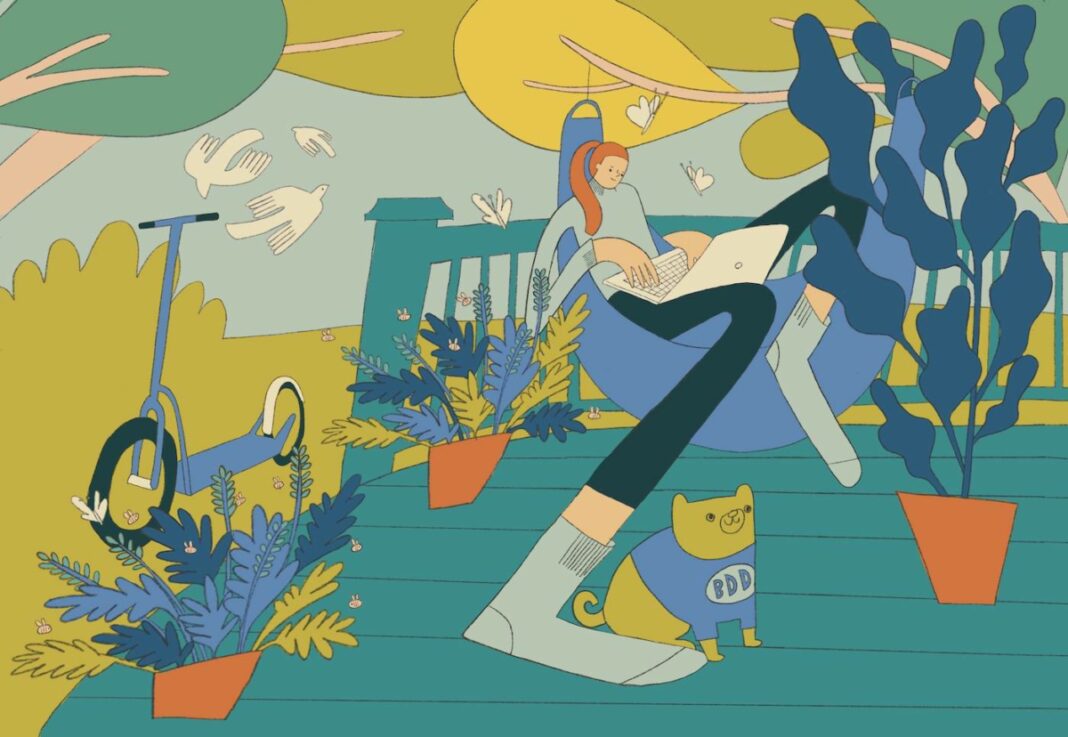Dear Dot,
I thought the House Finches were wiped out a number of years ago by a disease that made them blind. Have they made a comeback?
—Marie, Brooklyn, NY
Dear Marie,
The Short Answer: House Finches that become afflicted with House Finch Eye Disease (which affects more than just this species) can become blind, though the disease — and finch populations — have largely stabilized. We can help protect these charming finches by washing our feeders regularly, ensuring that birds aren’t crowded at our feeders, and joining the brigade of citizen scientists monitoring populations for incidence of the disease.
You write to me from Brooklyn, having seen, no doubt, Bluedot’s Brooklyn Bird Watch featuring those red-headed charmers, House Finches.
These perky peepers are indeed prone to Mycoplasmal conjunctivitis, or House Finch Eye Disease, confirms Pat Leonard, who works in media relations at the Cornell University Lab of Ornithology. Finches with the disease show red, swollen, runny, or crusty eyes. And, as you suspected, Marie, in extreme cases, the bird’s eyes swell shut and they become blind.
I will pause here for a moment while we all absorb the tragedy of these birds being unable to see and, therefore, perform any of the functions necessary for survival. I recall the words of poet Mary Oliver, appropriate to this particular anguish, who wrote: “… it is a serious thing/just to be alive/on this fresh morning/in the broken world.” Her subject matter was Goldfinches, who also suffer from this debilitating disease.
The bacterium Mycoplasma gallisepticum has long afflicted chickens and turkeys, though for those fowl, it manifests as a respiratory issue. But in 1994, Pat Leonard tells us, backyard bird watchers around Baltimore began sending the volunteers at Cornell’s Project Feederwatch handwritten reports of House Finches with crusty, red eyes almost bulging from their heads.
All About Birds, Cornell’s online guide to birds, tells us that, at that point in the early 90s, house finches were an enormously successful species and a familiar site at backyard feeders. And then, this poultry pathogen leapt across species.
Scientists, acting like scientists and not eco-advice columnists, viewed this as something of an opportunity to watch a disease spread in real time and to gather data. (Though I like to think they shed a few tears before getting down to work.) They mailed paper forms to thousands of bird lovers across the country — this was largely pre-Internet, of course. And then they waited.
Finches are rather fascinating, Marie. Cornell University’s All About Birds site discloses that finches are desert and grassland birds but amazingly adaptive, clearly, to non-desert environs. Around 1940, some enterprising folks in California created an illicit trade in captive finches, branding them “Hollywood finches,” a moniker undoubtedly aimed at conjuring glamor and opulence. But the nascent jig was up when an eagle-eyed birder spotted a caged house finch in a Brooklyn pet store and contacted the Audubon Society, who alerted wildlife officials to shut down the illegal trade. Many with caged finches in their possession, fearing prosecution, quickly ushered their avian abductees out the door and into the wilds of New York City, where the birds were delighted to take a bite out the Big Apple — until the wicked winter of 1947/48 left just about 50 finches still alive. But that few dozen offered enough of a foothold that an Eastern population of House Finches was flourishing by the ’60s and making its way west at the same time the Western population was heading east. By the ’90s, the two populations were conquering the continent. All hail the mighty House Finch!
And then [ominous music], enter the mysterious eye illness.
Meanwhile, at Cornell’s Lab of Ornithology, a Belgian guy named André Dhondt had relocated to lead its Bird Population Studies program. He and his researchers spent about a decade gathering several hundred thousand reports from about 10,000 dedicated citizen scientists monitoring their feeders and the finches for evidence of this novel disease. The disease itself was much more expedient, spreading from its first sightings in Maryland into Wisconsin, Minnesota, Iowa, and even Canada in just two and a half years. But finally the culprit had a barely pronounceable name: Mycoplasma gallisepticum.
Scientists learned that the birds that survived developed something of an immunity to the pathogen for roughly a year post-infection. But the pathogen would then grow more virulent, causing a greater immune response in the surviving birds, and so on.
You ask, Marie, whether House Finches were wiped out. They remain unflinchingly, finchingly stalwart — indeed Pat Leonard assures me that Cornell lists them as “a species of Least Concern with an increasing population” — but that’s not for lack of trying on the part of Mycoplasma gallisepticum.
Therefore, we must not rest, we soldiers of the House Finch army, in our battle against this foe! If you and your friends have backyard feeders, Marie, keep them clean. At least once a month, wash feeders with a diluted bleach solution (nine parts water to one part bleach), dismantling the feeder entirely, if possible. Rake the area beneath the feeder to disperse any moldy seed. And space your feeders far enough apart that birds have room to spread their wings, metaphorically and literally. It turns out that social distancing helps prevent the spread of viruses in birds as well as people. If you notice sick birds (the eye disease isn’t the only illness and House Finches aren’t the only birds afflicted), take down your feeders, clean them, and wait a few days for any sick birds to disperse before putting them up again.
And calling all citizen scientists! Sign up for Project Feederwatch and help provide valuable data to our bird-loving researchers.
Dot


